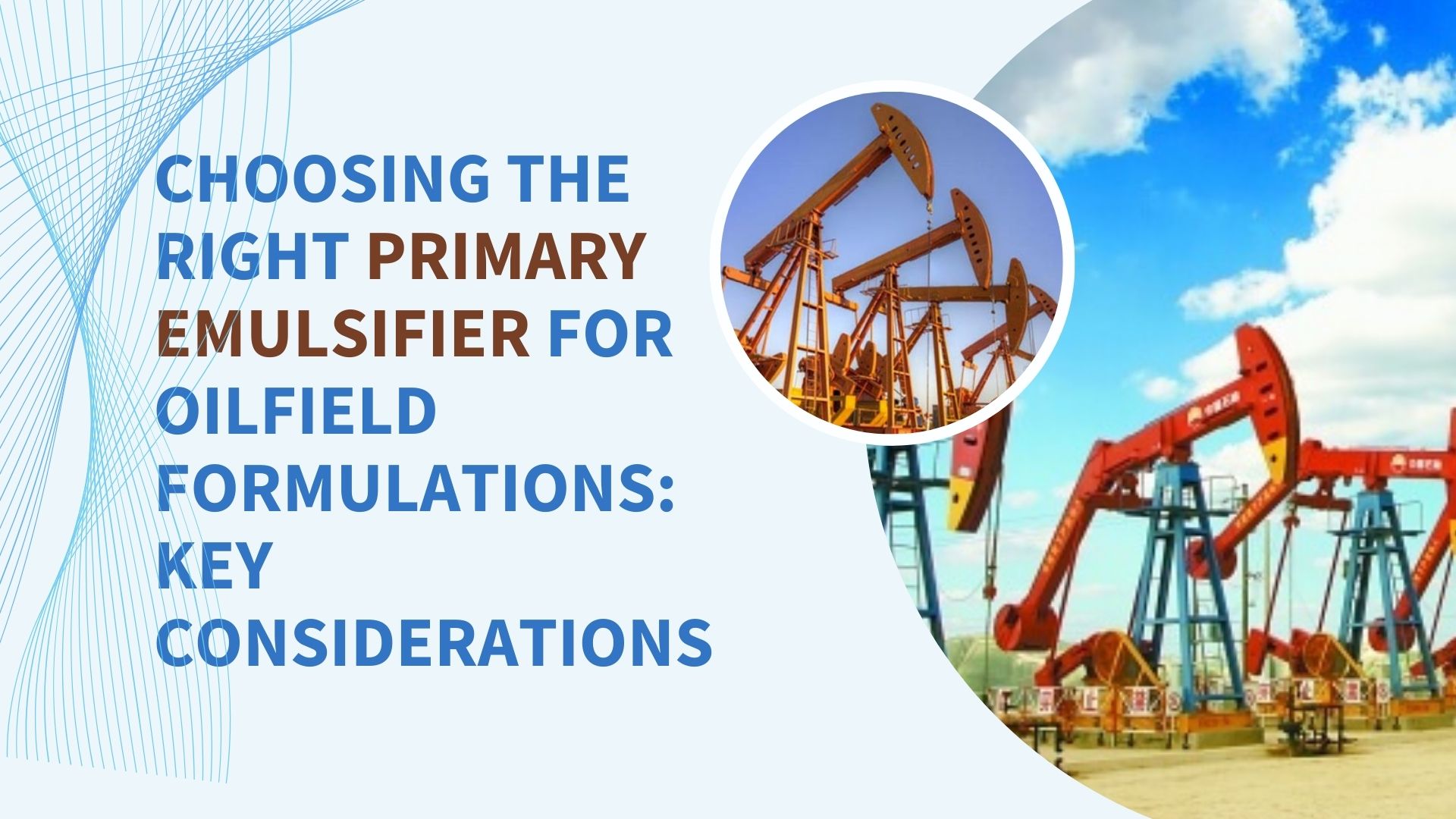Choosing a primary emulsifier for oilfield use is not about choosing a fancy chemical from a catalog. It is about understanding what really fits your system. And that means asking the right questions.
Whether you are handling formulation designs or working as a manufacturer of primary emulsifiers, the reality is the same – getting it wrong costs time and money. A lot of it.
Let us unpack this. Simply. From one field problem-solver to another.
-
Start with the Base Oil
You would not build a house without knowing the soil underneath. Same principle.
Your emulsifier needs to be compatible with your base oil – diesel, mineral, synthetic, whatever it is. Otherwise, stability is a gamble.
I have seen people assume “any emulsifier should work”. It rarely does.
So, test compatibility first. Small batches. Lab conditions. Save yourself the headache later.
-
Know the Emulsifier Type
Quick breakdown: You have got anionic, nonionic, and amphoteric emulsifiers. Each works best in different systems.
Anionic ones are great in high-salt systems. But not so much when the pH dips. Nonionic types are more forgiving but might not always offer strong stability. And amphoteric ones are flexible. They switch their behavior as per pH.
-
Temperature Changes Everything
You already know oilfield conditions are brutal. Hot one day. Freezing the other day. Your emulsifier should not care.
Thermal stability is a must. If the emulsifier starts to break at higher temps, the emulsion follows.
It is not just about surviving heat – it is about performing through. If you are unsure, run a hot roll stability test. It says a lot.
-
Emulsion Strength and Shelf life
This part is often overlooked.
You get a good emulsion today. But what about next time? Still holding?
Weak emulsifiers show their flaws over time. Separation starts. And by the time someone notices, fluids are already on-site.
So, test for long-term stability. The good ones hold together. Even after sitting in a drum for a while.
-
Conditions Change. Be ready for That.
No two fields are the same. Salinity, pressure, contaminants—all of it shifts.
You might get great lab results. But things might fall apart in the real world.
So, field test. Always. And do not get too comfortable with one formula.
-
Who You Buy from Matters More than You Think
This is not just about buying a chemical. It is about support. Advice. Troubleshooting.
A reliable manufacturer of primary emulsifier will walk the journey with you. They will help you tweak. Guide you through testing. And when things go wrong (because sometimes they do), they will be there.
Final Thoughts
There is no magic emulsifier that works everywhere. That is not how oilfield chemistry works.
But there is a smarter way to choose. Know your system. Test Carefully. Ask tough questions. And work with people who care about your results, not just their sales.
At the end of the day, the right emulsifier does not just improve performance—it saves you from a lot of stress later.
Author Bio
Ramesh Patel, Sales & Marketing Director at Minal Specialities, brings over 17 years of international experience with deep expertise in oil & gas chemicals and global market expansion.









